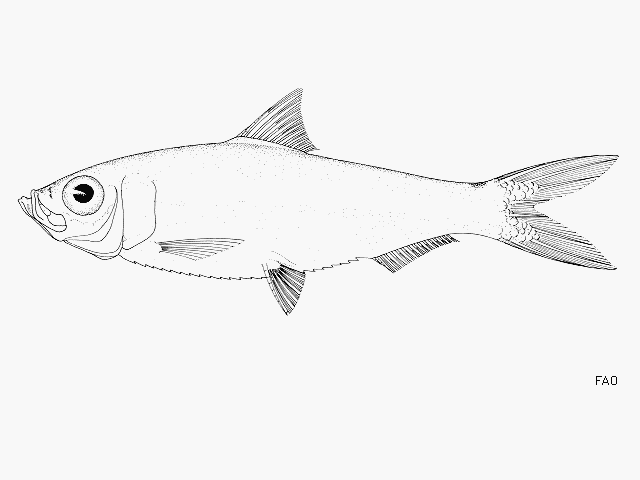| Dorosomatidae (Gizzard shads and sardinellas) |
| 15 cm SL (male/unsexed) |
|
pelagic-neritic; brackish; marine; depth range 0 - 50 m |
| Western Atlantic: Nueva Esparta, Venezuela; coasts of Brazil from Racife and Lake Papary near Natal south to Bahia and Espirito Santo); probably occurring throughout northern South America (Ref. 5217). |
|
Dorsal spines (total): 0-0; Dorsal soft rays (total): 13-21; Anal spines: 0-0; Anal soft rays: 12-23. Belly sharply keeled; a well-developed first (anterior) supra-maxilla (cf. Platanichthys platana); hind border of gill opening evenly rounded; no retrorse spine on upper part of maxilla (cf. Rhinosardinia). Closely resembles the Pacific L. stolifera, but caudal fin tips not black. The very bright silver stripe along flank distinguishes it from other similar clupeids in the area. |
| Occurs inshore, over muddy bottoms and in brackish or hyper-saline littoral lagoons (Ref. 5217). Forms schools. |
|
Least Concern (LC); Date assessed: 23 August 2012 Ref. (130435)
|
| harmless |
Source and more info: www.fishbase.org. For personal, classroom, and other internal use only. Not for publication.
